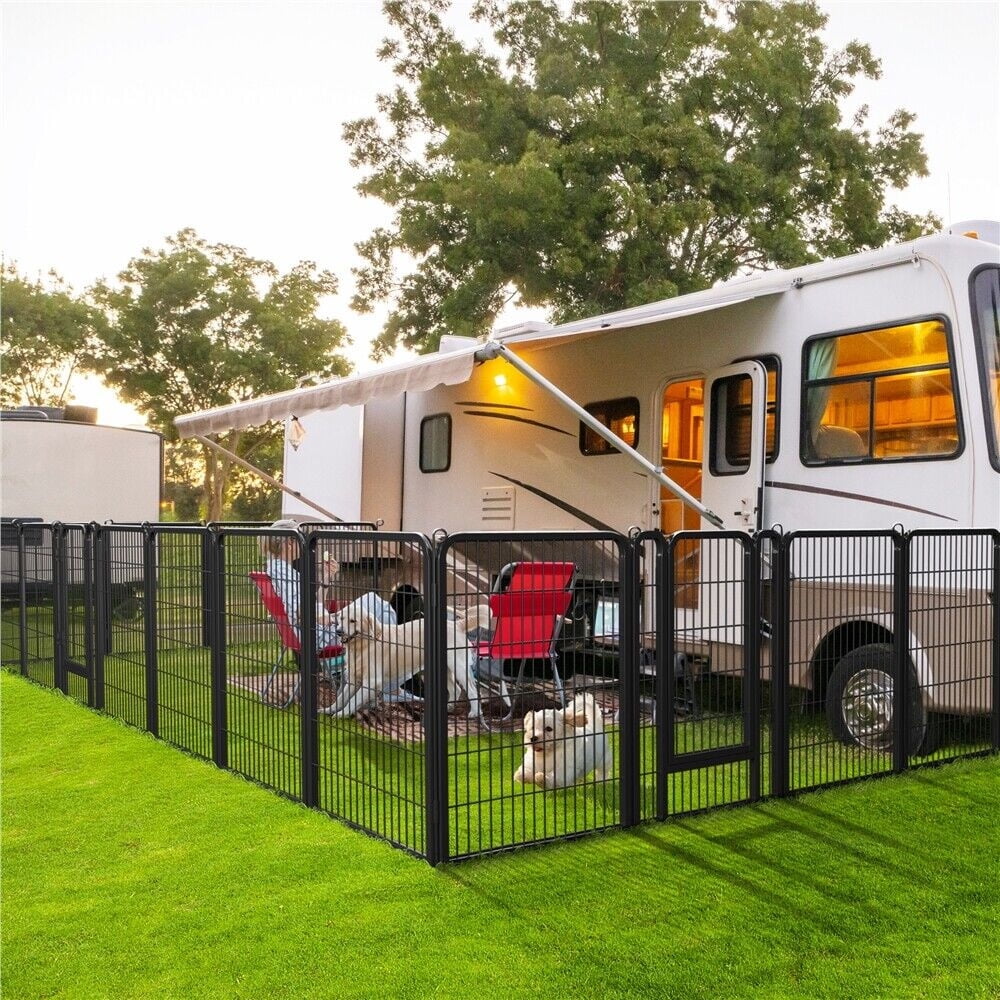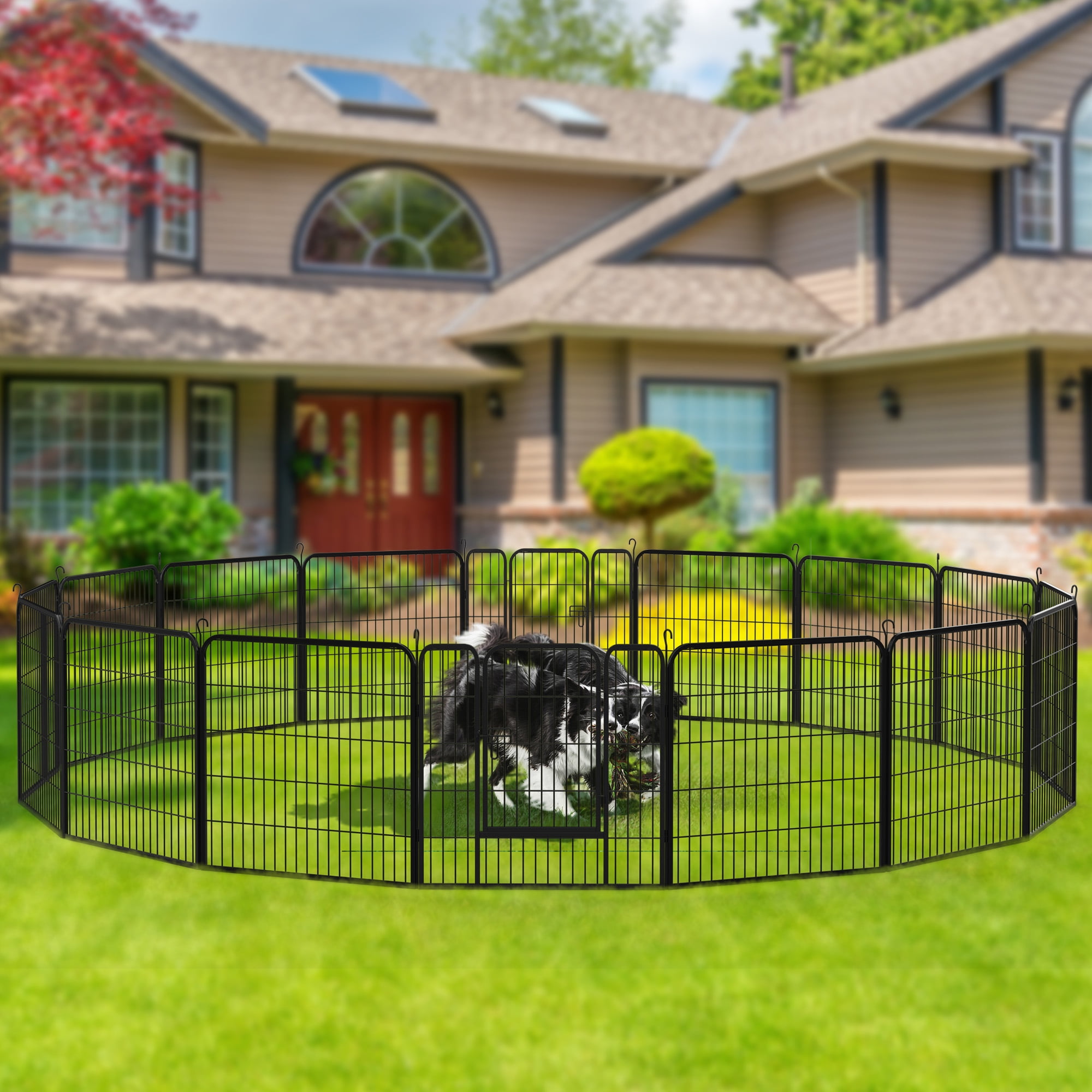As a dog owner, ensuring the safety and happiness of our furry companions is paramount. One effective solution that combines functionality with aesthetic appeal is a decorative dog fence. Not only does it keep our dogs safe and contained, but it also enhances the overall look of our outdoor space. In this comprehensive guide, I’ll share my personal experiences and insights on decorative dog fences, covering types, benefits, installation tips, and much more.
What is a Decorative Dog Fence?
A decorative dog fence serves as a boundary for your pets while simultaneously adding a stylish element to your yard. These fences come in various materials, designs, and heights, allowing you to choose one that complements your home and garden style. Let’s delve into the details!
Benefits of a Decorative Dog Fence
- Enhanced Safety: Keeps dogs contained and protects them from potential dangers outside.
- Aesthetic Appeal: Beautifies your yard and can increase your property’s curb appeal.
- Customizable Options: Available in multiple designs and materials to fit every taste.
- Durability: Many decorative fences are built to withstand the elements, ensuring long-term use.
Types of Decorative Dog Fences
Choosing the right decorative dog fence involves considering materials, styles, and functionality. Below are some popular options.
Wooden Fences
Wooden fences offer a classic aesthetic that can be customized with paint or stain. They provide excellent visibility while ensuring your dog stays secure.
Pros:
- Natural look
- Can be painted or stained
Cons:
- Requires regular maintenance
- Can warp or rot over time

Vinyl Fences
Vinyl fences are low-maintenance and resistant to decay, making them a popular choice among pet owners.
Pros:
- No painting required
- Durable and weather-resistant

Cons:
- Can be more expensive upfront
- Limited color options compared to wood
Chain Link Fences
Chain link fences are a budget-friendly option that offers visibility while keeping dogs contained. They can also be adorned with decorative slats or privacy slats.

Pros:
- Cost-effective
- Easy to install
Cons:
- Less aesthetic appeal
- Not as secure for larger breeds

Composite Fences
Composite fences combine wood and plastic fibers, giving them a natural appearance without the drawbacks of traditional wood.
Pros:
- Low maintenance
- Long-lasting and resistant to cracking

Cons:
- Higher initial cost
- Limited design options
Choosing the Right Decorative Dog Fence for Your Needs
When choosing a decorative dog fence, consider the following factors:
- Dog Size: Larger breeds may require taller and sturdier fences.
- Yard Space: Measure your yard to determine how much fencing you need.
- Local Regulations: Check for neighborhood restrictions regarding fence heights and materials.
- Style Preferences: Consider the overall style of your home and landscaping.

Installation Tips for Your Decorative Dog Fence
Installing a decorative dog fence can be a DIY project or you can hire professionals. Here are some tips if you choose to install it yourself:
Planning and Preparation
- Measure your yard and outline the fence’s perimeter.
- Check for any underground utilities before digging.
- Gather all necessary materials and tools.
Installation Steps
Follow these steps for a successful installation:
- Mark where the fence posts will go, ensuring they are evenly spaced.
- Dig holes for the posts, typically 1/3 of their length.
- Install the posts and ensure they are level.
- Attach the fencing material securely to the posts.
- Finish with any desired decorative elements, such as plantings or trellises.
Maintaining Your Decorative Dog Fence
Once installed, maintaining your decorative dog fence is crucial for long-term durability. Here are some maintenance tips:
Regular Inspections
Regularly inspect your fence for any damages, loose panels, or signs of wear. Early detection can prevent bigger problems down the road.
Cleaning
Keep your fence clean from debris or dirt. For wooden fences, consider washing and treating with sealant regularly.
Repairs
Be proactive in repairing any damages as they occur, whether it’s fixing broken panels or reinforcing weak sections.
Comparison Table of Decorative Dog Fences
| Type | Material | Cost | Maintenance | Aesthetic Quality |
|---|---|---|---|---|
| Wooden Fence | Wood | Medium | High | High |
| Vinyl Fence | Vinyl | High | Low | Medium |
| Chain Link Fence | Metal | Low | Low | Low |
| Composite Fence | Composite | High | Medium | Medium |
Personal Experience: Why I Chose a Decorative Dog Fence
When I got my first dog, I quickly realized that traditional fencing wasn’t going to suffice. I wanted my yard to look inviting while ensuring my dog’s safety. I opted for a wooden decorative fence, which not only kept my playful pup within safe bounds but also added charm to my garden. I’ll never forget the joy of watching my dog play freely, knowing he was secure. Upkeep was challenging, especially with the wear and tear from our sunny summers and heavy rains. However, it was worth every effort for the peace of mind and the look it provided.
Frequently Asked Questions (FAQs)
1. How high should a decorative dog fence be?
The height depends on your dog’s breed and jumping ability. Generally, 4-6 feet is sufficient for most breeds.
2. Can decorative fences be used for other pets?
Absolutely! Decorative dog fences can also keep other pets such as cats, rabbits, and smaller animals safe within the yard.
3. Are decorative dog fences more expensive than traditional fences?
Decorative fences can be more expensive initially due to their design and material, but they often provide greater value in aesthetics and durability.
4. Do I need a permit for installing a decorative dog fence?
It depends on your local regulations. Be sure to check with your local authorities before installation.
5. How long does a decorative fence last?
The lifespan of a decorative fence varies by material. Wood may last 15-20 years with proper maintenance, while vinyl can last up to 30 years.
In conclusion, a decorative dog fence not only provides a safe environment for your pets but also adds to the beauty of your home. By carefully considering your options and incorporating thoughtful installation and maintenance, you can create a charming and secure space for your beloved dog.